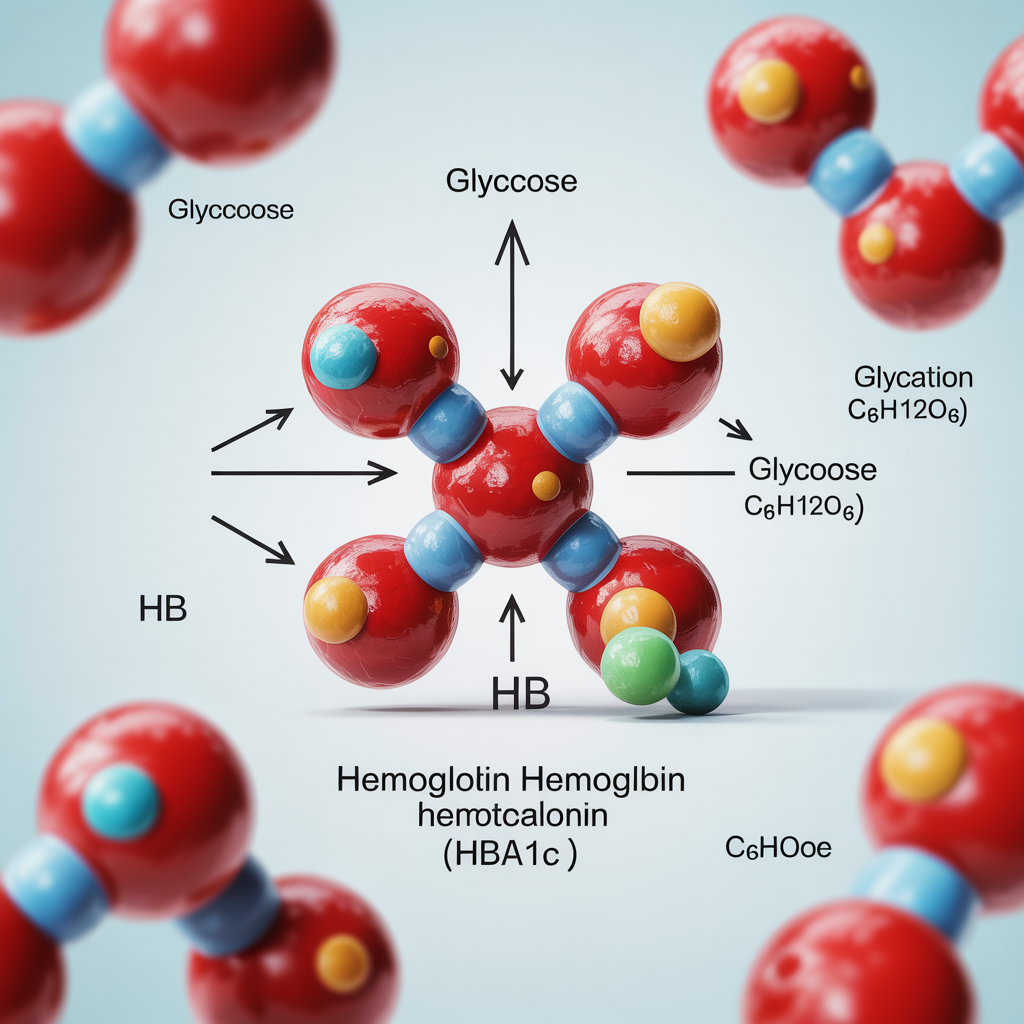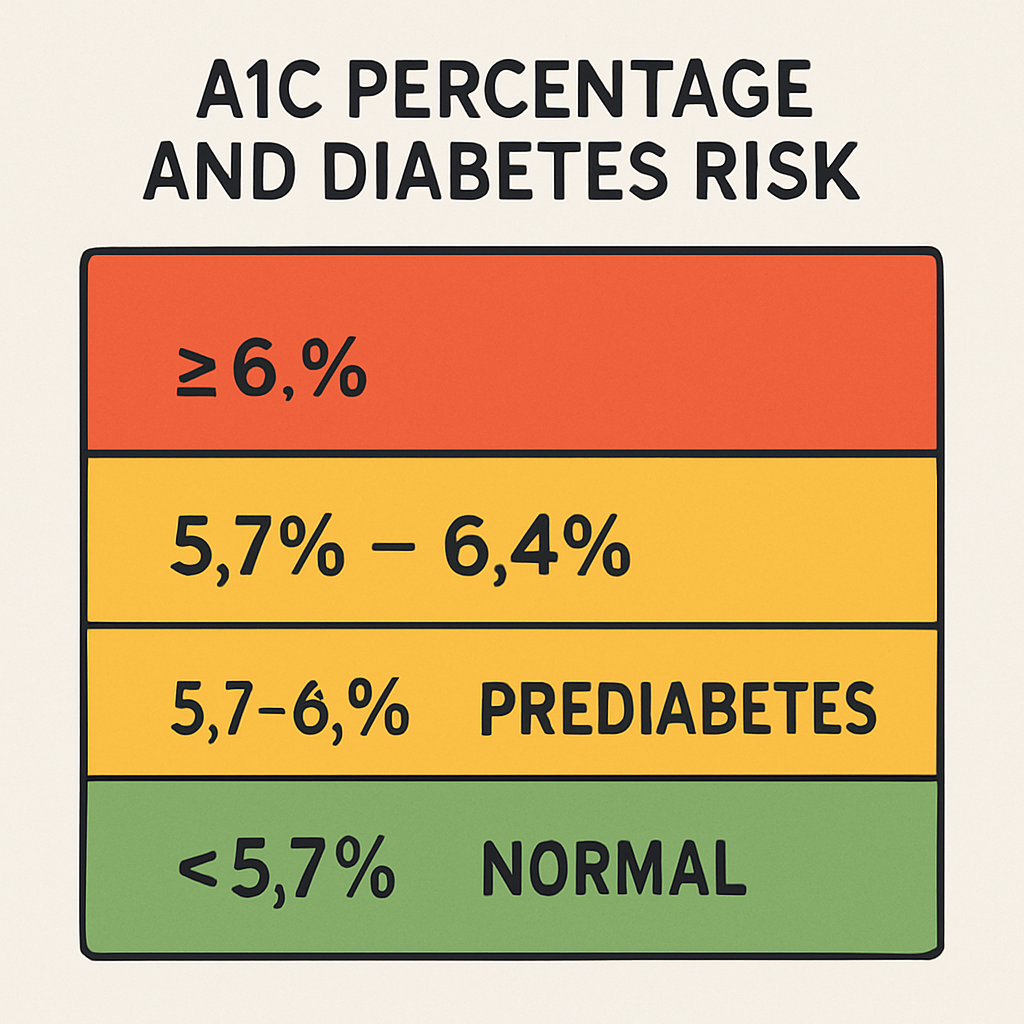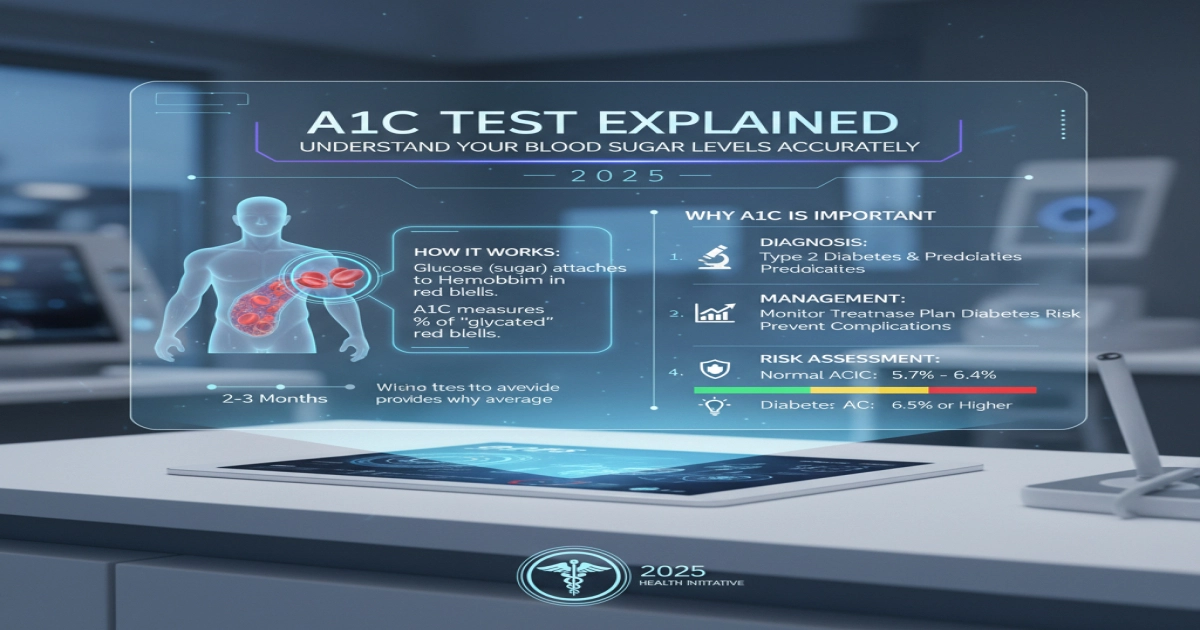
By Dr Adam | Published November 13, 2025
Quick answer: The A1C test measures average blood sugar over 2–3 months by evaluating glycated hemoglobin. Values below 5.7% indicate normal glucose control, 5.7–6.4% identify prediabetes, and 6.5% or higher confirms diabetes. Regular testing detects uncontrolled glucose early and guides treatment precisely.Quick summary
- Measures long-term blood sugar via hemoglobin glycation.
- Normal: <5.7%, Prediabetes: 5.7–6.4%, Diabetes: ≥6.5%.
- Used with fasting glucose and OGTT for diagnosis.
- Directs treatment, lifestyle interventions, and medication adjustments.
What is the A1C Test?

The A1C test, also called HbA1C, measures the percentage of hemoglobin molecules bound to glucose. Studies show this percentage accurately reflects average blood sugar over the previous 2–3 months (CDC, 2025).
How the A1C Test Works
Red blood cells live 120 days. Glucose attaches to hemoglobin, forming glycated hemoglobin. Higher blood sugar produces a higher A1C. Labs report A1C as a percentage: higher values indicate poor blood sugar control. A 2024 study in JAMA confirms that A1C directly predicts long-term microvascular complications.
Who Should Take the A1C Test
Routine A1C testing is essential for adults with type 2 diabetes risk factors:
- Age 40 or older
- Overweight or obese
- Family history of diabetes
- History of gestational diabetes
- High blood pressure or abnormal cholesterol
Type 1 diabetes patients require consistent A1C monitoring to adjust insulin therapy effectively.
Interpreting Your Results

| A1C (%) | Interpretation |
|---|---|
| <5.7 | Normal |
| 5.7–6.4 | Prediabetes |
| ≥6.5 | Diabetes |
Clinical guidelines require confirming diabetes diagnosis with a repeat A1C or additional tests (fasting plasma glucose, OGTT). The ADA instructs interpreting A1C alongside symptoms and lab results for accurate diagnosis (ADA Standards of Care, 2025).
How Often to Test
- Adults without diabetes: every 3 years starting at age 35 (CDC, 2025)
- Prediabetes: annually
- Type 1 or type 2 diabetes: every 3–6 months depending on control
Advantages of the A1C Test
- Provides long-term blood sugar measurement
- Does not require fasting
- Predicts risk for microvascular complications
Limitations and Considerations
- Anemia, hemoglobin variants, and blood disorders alter A1C results and require adjusted interpretation
- Pregnancy changes hemoglobin glycation, affecting A1C readings
- Racial differences influence A1C levels; clinicians adjust interpretation accordingly (WHO, 2025)
Editor’s Pick:Learn more about recognizing diabetes early symptoms, diagnostic tests, and action steps to protect your health.
Frequently Asked Questions
Normal A1C is below 5.7%. Levels 5.7–6.4% indicate prediabetes, and 6.5% or higher confirms diabetes.
The A1C test does not require fasting and can be performed at any time of day.
Yes. Prediabetes is defined as an A1C of 5.7–6.4%, enabling early intervention.
The A1C test provides accurate long-term blood glucose measurement, with adjustments made for anemia, hemoglobin variants, and blood disorders.
About the author: Dr Adam is a medical researcher and health writer specializing in metabolic disorders. Their work translates clinical research into practical guidance that patients can follow to prevent and manage diabetes effectively.

